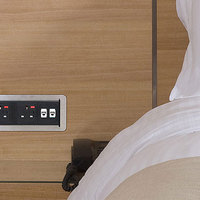[ad_1]
When using electrical appliances abroad, the voltage, frequency and socket type can vary greatly between countries, which can potentially damage electronic devices while abroad or prevent them from working at full capacity. To ensure travellers don’t receive an unexpected ‘shock’ while on holiday, Airport Parking and Hotels (APH) has compiled a table highlighting the voltage requirements overseas including an infographic and global map comparing the plug sockets available in each country.
The table and map highlight the single-phase and three-phase voltage requirements in 30 countries including Australia, China, Europe and the USA. The research also compares the different plug sockets used around the world and the frequency provided in each country.
Electrical products in the UK are compatible with an electricity supply of 230 volts and a frequency of 50 Hz, however many countries operate on a lower supply of 110 volts and a higher frequency of 60 Hz. This means plugging an electrical product from the UK directly into an international socket is not always a safe option and a transformer or a converter may be needed.
Countries such as Canada, Costa Rica, Jamaica, Japan, Mexico and the United States all operate between 100 and 120 volts and UK travellers therefore need to use a step-down converter to cut the number of volts flowing into the appliance by half. However, holidaymakers should be careful when travelling around Brazil where there is no standard voltage and the electricity can vary depending on the region ranging from 127 volts in Rio de Janeiro to 220 volts in Piaui.
Portable electronic devices such as laptops and phone charges will support dual/worldwide voltage meaning they will work on 110 volts in countries such as Canada and Jamaica, as well as on 220 volts in European destinations and other worldwide countries. However, travellers should check if the frequency is different between the electrical appliances and the electricity supply, as the normal operation of the product may be affected. For example, a 50 Hz digital clock from the UK may run faster when used on a 60 Hz foreign electricity supply in countries such as Brazil, Canada and Mexico and will therefore require a transformer.
For UK holidaymakers travelling to Europe, the voltage and frequency are the same as at home ranging from 220 volts to 240 volts and 50 Hz frequency. However, travellers should be careful when using the shaver socket found in many European bathrooms that supply 110/120 volts and are for use only with low wattage appliances, such as electric shavers or electronic toothbrushes and not with high wattage appliances such as hairdryers.
Plug sockets can vary between European countries and include sockets known as C, E, F and G. However, travellers visiting Dubai, Hong Kong, Qatar and the Seychelles will be able to use their standard UK plug. Travellers should also be aware that many countries use more than one type of socket and should therefore check they have the correct adapter.
Nick Caunter, Managing Director of APH said, “Checking electricity supplies abroad is not always on the top of the pre-holiday check list, however plugging UK electrical equipment directly into a foreign socket can damage or destroy an appliance. With international electricity requirements sometimes proving to be a confusing topic, we hope the information provided in the Know Before You Go section of our website will help travellers plan ahead and ensure they have the correct equipment while on holiday.”
[ad_2]You can read more of the news on source
 Travelsmart
Travelsmart



